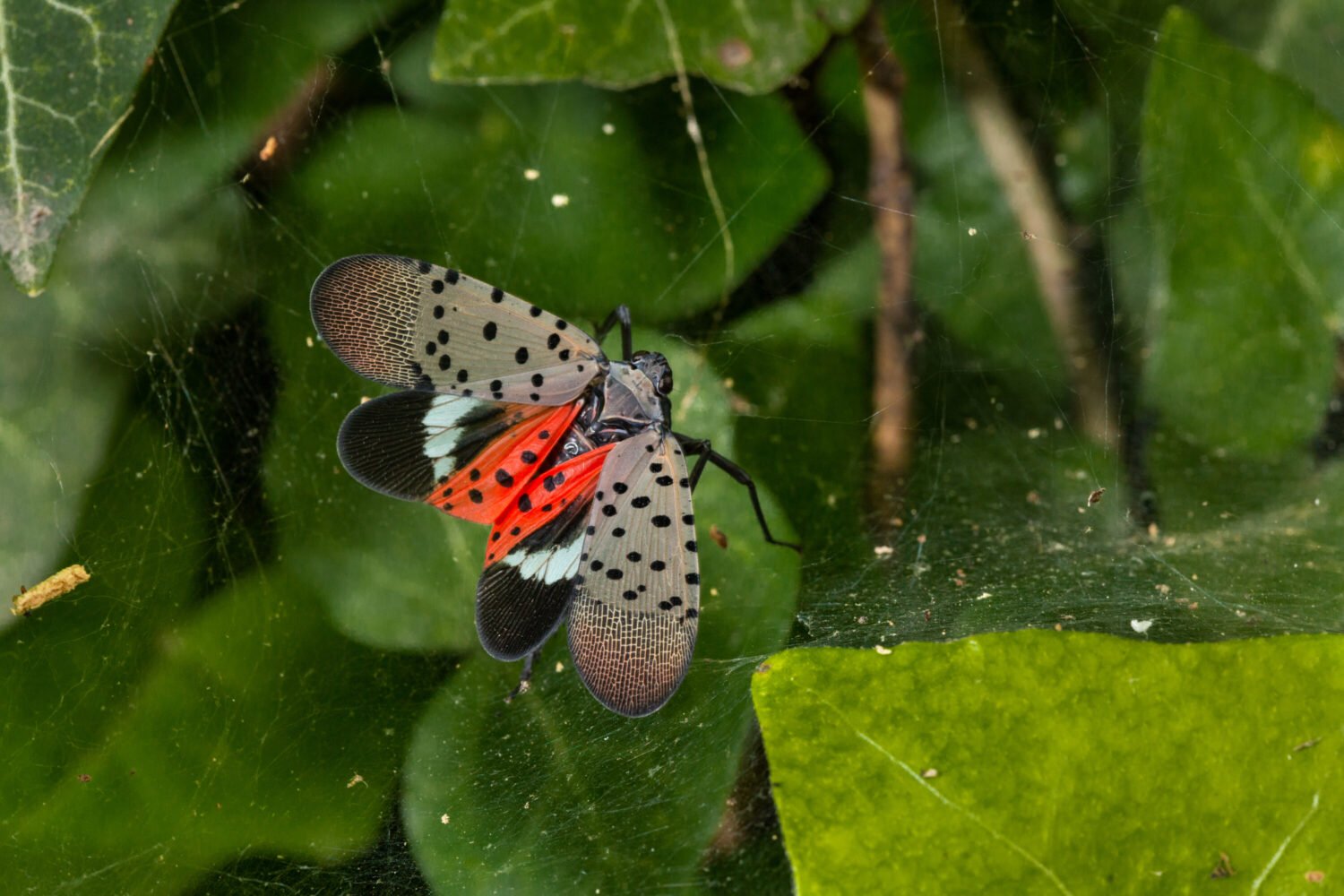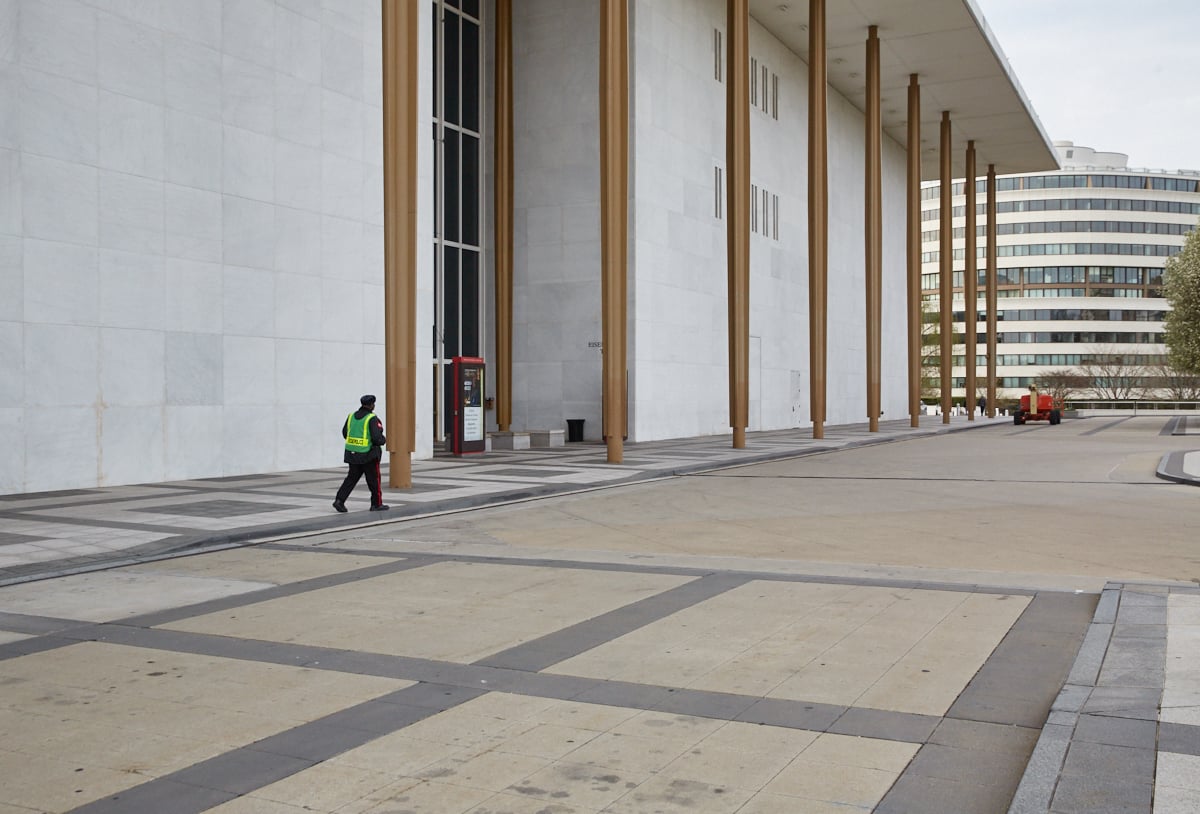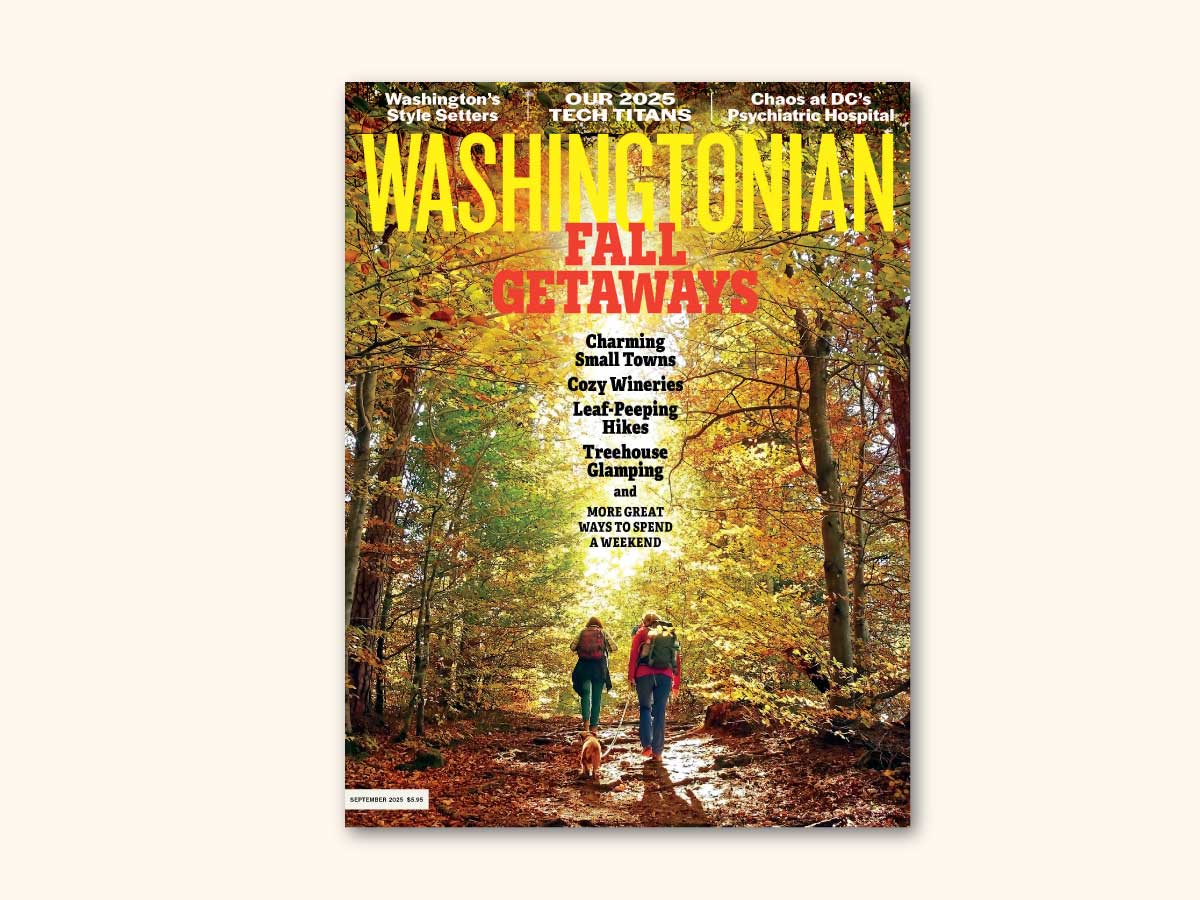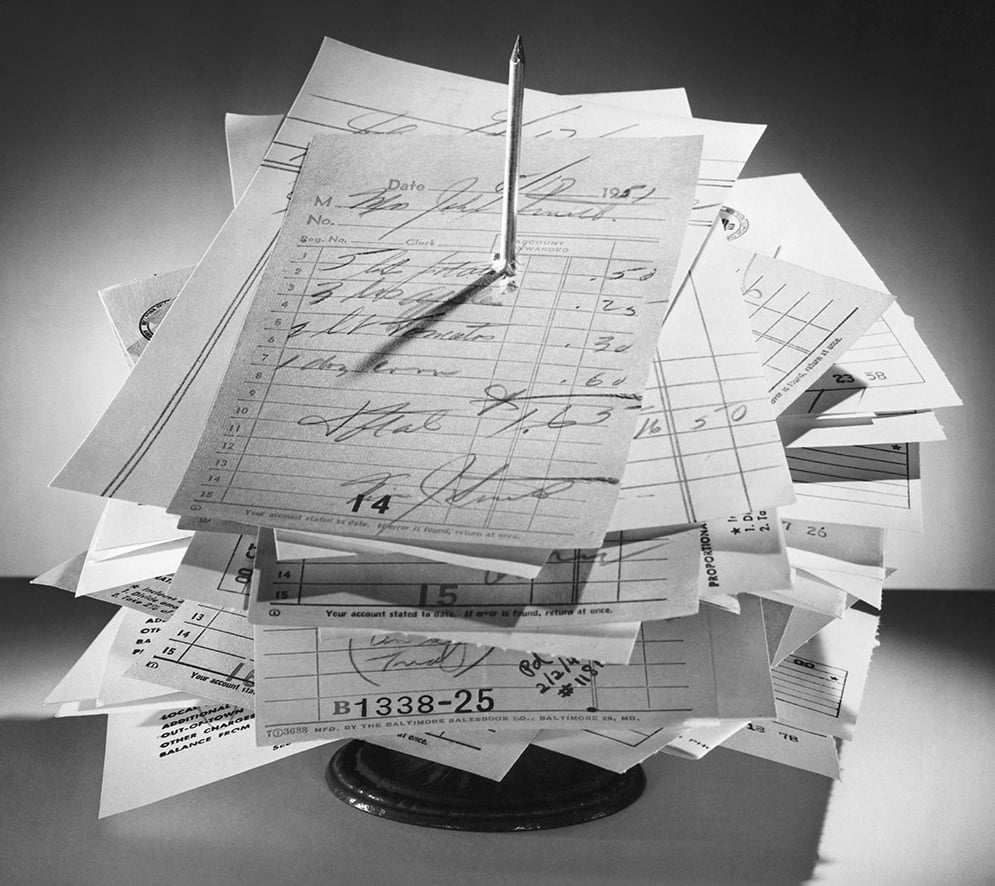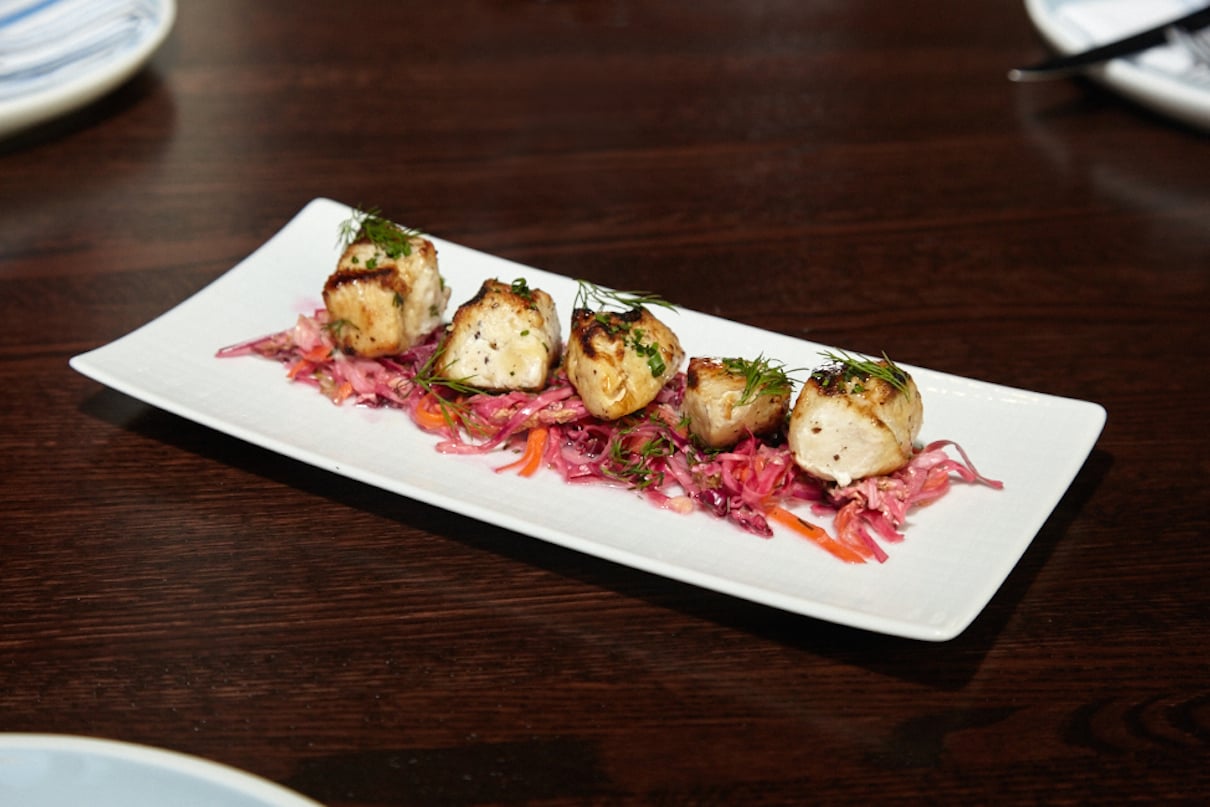Entertainment
Then: Flamenco dancers, opera singers, belly dancers, “gypsy” music.
Restaurants such as II Caesars in downtown DC advertised “the sound of gypsy music,” with performers plating stringed instruments.
Now: Grunge iPod playlists.
Freebie
Then: “Intermezzo”of sorbet.
The dainty palate cleanser of bracing, sometimes boozy sorbet was traditionally served between savory courses during a long meal or before dessert.
Now: Amuse-bouche.
Cause for Controversy
Then: Sidewalk dining.
Years of debate between the DC government and restaurants preceded outdoor dining. The opposition cited noise and a fear that the seating “would provide a favorable setting for ladies of easy virtue.” Bassin’s opened DC’s first patio cafe in 1961.
Now: Food trucks.
Unsustainable Seafood
Then: Diamondback terrapin.
You won’t find Maryland’s “state reptile” on today’s menus. Once a common ingredient, the overfished turtle was considered a delicacy by the late 1950s, topping lobster with its $3 price at the swanky Miller Bros. in Baltimore.
Now: Bluefin tuna.
How to Order
Then: “Complete meals”—an entrée plus soup, salad, sides, coffee, and dessert.
Now: À la carte meats with family-style sides.
If you’re not doing small plates, chances as you’re paying for your sides à la carte.
Showpiece Dish
Then: Caesar salad for two, prepared tableside.
Caesars today come grilled, deconstructed, or otherwise reimagined. The Majestic in Alexandria makes the salad the old-fashioned way, and it’s our favorite version in town.
Now: A molcajete of guacamole.
Nonalcoholic Drinks
Then: Shirley Temples and Charlie Browns.
Now: Lemongrass-infused mocktails.
Throwing some grenadine into a Sprite doesn’t cut it anymore. Many restaurants, from casual spots to steakhouses, offer nonalcoholic elixirs that can take as long to make as craft cocktails.
Decor
Then: Tall candles, fresh flowers, costumed servers.
Costumes were the norm at many ethnic restaurants—waitresses at the hibachi-style Japan Inn in Georgetown wore kimonos, while servers at German restaurants such as Old Europe donned dirndls.
Now: Exposed brick, no linens, black T-shirts.
Hot Cuisine
Then: French.
Now: Italian.
More than 15 Italian eateries opened in 2013, including six on Northwest DC’s 14th Street. Expect more, including big openings from Fabio Trabocchi, Roberto Donna, and New York restaurateur Michael White.
Name-Checking
Then: Menus boastedHäagen-Dazs ice cream, Sanka, Twinings tea.
Even high-gloss restaurants such as Sans Souci advertised products found in grocery stores.
Now: Menus list the farmers who grow the chard and churn the butter.
Where You’ll Find Tomato Juice
Then: Among the appetizers.
Chilled tomato juice was a common starter, considered both healthy and palate-cleansing. The fanciest was fresh; the more pedestrian was canned V8.
Now: In your bacon Bloody Mary.
Essential Chef Accessory
Then: A tall toque.
Now: A pig tattoo.
You’ll see them on the forearms of Volt’s Bryan Voltaggio and Matchbox’s Jacob Hunter and on the rib cage of Beuchert’s Saloon chef Andrew Markert.
What Women Were Given
Then: Free orchids and menus without prices.
The practice of giving a menu without prices to a woman on a date largely disappeared in the ’70s. Some restaurants still keep price-free menus on hand for business dinners.
Now: The wine list.
Rules
Then: Jackets required.
Though few places require men to wear jackets these days—the Prime Rib is a holdout—dressing for dinner was de rigueur. Jeans would have been unthinkable at high-end restaurants.
Now: No Instagramming.
Vending Machine
Then: Sandwich-dispensing automat.
Now: Cupcake ATM.
Soon, at least: The Los Angeles-based Sprinkles chain is planning to bring one to its Georgetown store, so customers can satisfy their sugary cravings 24-7.
This article appears in the November 2013 issue of Washingtonian.


